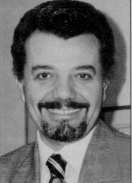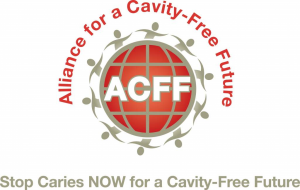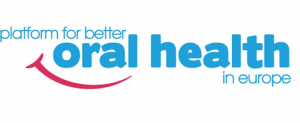
NEWSLETTER Number Two June 1997
How many specialist in Paediatric Dentistry are needed in a child population?/a>
Constantine J. Oulis - Profile
Abstracts
Men don't cry
6th CE Seminar of the Greek Society of Paediatric Dentistry
Advertising
|
Message from the President.
 Dear Colleagues, Dear Colleagues,
The recognition of our speciality has been considered as one of the main priorities set forth since the foundation of our Academy Every President, since then has included the topic in the agenda of all the Council meetings and several discussions have been carried out mainly about the necessity of our speciality to be recognized. Furthermore, we have discussed how much we want to see this happen, and how nice it would be to have Paediatric Dentists amongst the recognized specialities in Europe and so on. It is time though, dear Colleagues, to see what we have gained and how much we have succeeded so far towards the fulfilment of our goal. How far away from the starting point have we really gone? Have our efforts really been directed in the right direction? Have we convinced anybody else besides our members? Is this the right target of our efforts? Or, are we constantly trying to convince those that have already been convinced? We do need, of course, our members to support the idea and we need to carry our discussions on the matter within our Academy in order to strengthen our views and move towards the same direction. But this is not enough. This cannot make our speciality be recognised nor can it give our members the power or authority to do so. The recognition of a speciality is more or less a political issue and a decision which is taken by the appropriate authorised bodies of people within each European country or by the analogous group of people in Brussels for Europe (see: Dental Advisory Committee). The critical question asked at this stage of our development is whether we follow the same course that we have followed up to now, or do we change philosophy and line of action. It is time, I think to be more realistic. To move from the discussions to the actions and take some steps forward. It is time to look beyond our membership. We have to have a strategic plan with identified targets and concrete steps of action. We have to find and influence the people who make such decisions in every country and those representing their country to the various committees such as the Dental Advisory Committee of the EU and where the decisions are taken. We have to convince these people on why paediatric Dentistry should be recognised as a speciality, why it is needed and what its contribution to the improvement of Children's oral health would be? The general feeling in Europe concerning recognition of more specialities is not very promising nor encouraging. Most people believe that there is no need for more specialities whilst general dental practitioners fear that specialists will take away some of their work. We have to change both of these beliefs because they are both wrong. The general dental practitioner has nothing to fear from the recognition of our speciality, but has much to gain from the children returning to his care after a certain period of time. This brings us to the point where we realise two things that we have not done so far. Firstly, how to find and approach these people, and secondly, all the arguments and convincing points in favour of our speciality have never been written in a document and to date are missing. Such a document in which we would include our mission statement would be a useful tool for communicating with people and authorities. Based on the above, I see three very important steps that should be taken immediately:
1) Appointment of a Task Force of three people charged to These are my thoughts and the way I see our action towards the fulfilment of our goal. Let's see what other suggestions we might have towards the direction to do something right now. Time is running out and instead of trailing after problems encountered by not having our speciality recognised, we ought to be ahead of them by preventing their development. And that applies for every European country. Constantine J Oulis
|
|
Profile Born in Corinth, a town out of Athens, Constantine Oulis grew up and went to school there until the end of High School. Later, he moved to Athens for his undergraduate studies in Dentistry at the University of Athens. Following his undergraduate studies he had to serve for two and a half years in the military, specifically with the Airforce. Before these obligations were completed, the need for money (due to difficult situations) and his eagerness for action caused him to begin his private practice in General Dentistry - a field that gave him a lot, as it seemed later when he began to work with children. He also started to assist at the University of Athens as a clinical instructor in the Department of Operative Dentistry. His love for children and the need he realised existed led him to want to pursue Paediatric Dentistry. His dream became a reality and his doors finally opened when American Paediatric Dentists visited children's camps in the territories of Athens every summer. From the first minute, he joined the group and every day that went by, he saw that Paediatric Dentistry would become his great love. This was not, however, adequate training and in order to acquire proper education, he travelled to the United States to receive his speciality certificate. After a period of three and a half years at the University of Birmingham in Alabama, along with this certificate of the speciality, he obtained a Master's Degree in Oral Biology (Caries Research). The time he spent there was one of the most wonderful and useful periods of his life. Beyond the education he was receiving he had taken opportunities to meet the pleasant people of the South, but most of all he had the chance to work under the supervision of a well acknowledged and respected researcher in the field, Professor Theodore Koulourides. In 1982, Constantine Oulis returned to Athens and dedicated himself to the University and the Speciality, working full time and hard, in order to accommodate teaching, research and his private practice. Along with two other pioneer Paediatric Dentists (Professor Papagiannoulis and Professor Kouvelas) he fought to achieve the establishment of the speciality of Paediatric Dentistry from square one, simultaneously at the University of Athens and in the Community. Following a great deal of effort, the department was officially established in 1985 and he became a lecturer. After four years he was appointed Assistant Professor, a position he serves until today. As role models these pioneers in Paediatric Dentistry in Greece stimulated over 50 students to follow their footsteps leading to a dynamic group of well qualified Paediatric Dentists all over Greece. Now a three-year Postgraduate programme in Paediatric Dentistry has finally been established rewarding all their labours. Besides the tireless efforts at the University level, the need for education and training of the profession and the Society was tremendous. For more than ten years hundreds of lectures were given to dentists and parents around the country. From 1984-1986 and 1987-1989 he contributed to the establishment of Dentistry within the National Health System as a member of the Oral Health Care Committee appointed by the Ministry of Health. As part of this contribution, he worked for the implementation of several Preventive Programmes in Dental Health Centres as well as in the Community. Since 1990 he has been continuously voted as elector of the General Assembly of the Hellenic Dental Association and from 1994 he has been elected to the Board of the Dental Association. For many years, he served in the Council of the Hellenic Society of Paediatric Dentistry and since 1989 has been the Secretary-General of this Society. During these same years, he has also been the editor of the Society's Journal Paedodontia which is published four times a year and has 4000 subscribers. He is an author of many papers, and has published several chapters in Hellenic textbooks. His scientific work beginning with the work for the requirements of his Master's was in Cariology and more specifically with de- and remineralisation of dentine. With passing years, clinical research has attracted him more. He thus carried out several epidemiological and clinical studies in Greece while he also participated in two European collaborative studies one of which was funded by the EU.
|
|
by Stephen Fayle
The effect of sleep on conscious sedation: a follow-up study. Sanders BJ. J Clin Pediatr Dent 1997, 21:131-134 The purpose of this study was to evaluate the effect of preoperative sleep on the success of conscious sedation for dental treatment in children. Seventy- six children, ranging from 18 to 61 months old and in need of dental treatment were included in the study. All were judged to have been "negative" or "very negative" on the Frankl behaviour scale at an assessment appointment. 62 were sedated using an oral combination of chloral hydrate (50-60 mg/kg) and hydroxyzine palmoate (15-32 mg/kg), and 14 subjects using intramuscular meperidine hydrochloride 2.2mg/kg). On the day of the sedation appointment, prior to treatment, parents were asked to complete a questionnaire about their child's activity, diet and bedtime the previous day. After the sedation the operator was asked to rate the success of the sedation and the patient s behaviour using the Frankl scale. Statistical evaluation revealed no significant difference in the success of sedation between those children reported to have had a normal or greater than normal length of sleep the previous night, and those reported to have had less sleep than normal. The success of the sedation was significantly higher p<0.03) in children older than 3 years. There was a weak relationship between parental perception of their child's tiredness and the success of sedation p<0.08), with a tendency toward poorer sedation in tired children. The authors conclude that although with clear correlation between a child’ s pre-operative sleep and the outcome of conscious sedation was demonstrated, a tired child may increase the likelihood of poor sedation.
Damage to the primary dentition resulting from thumb and finger sucking habits. Fukuta O, Braham RL, Yokoi K, Kurosu K. J Dent Child 1996; 63: 403-407 In this retrospective study, the dental charts of Japanese children were reviewed to evaluate the effect of digit sucking on the primary occlusion. Records of 671 children with no history of oral habits and 259 children with a confirmed digit sucking habit were identified. Data regarding anterior overjet, overbite and whether the second primary molars exhibited a mesial step, distal step or flush terminal plane were obtained from the clinical records or study models. The results demonstrated a higher frequency of open bite and maxillary protrusion in all ages of children with a thumb or finger sucking habit. In five-year old children, the mesial step terminal plane was less frequent in those with a habit compared to those without. Similarly, a distal step terminal plane relationship was seen more frequently in the habit group. Children who had a distal step terminal plane and continued oral habits after four years of age had an increased tendency to a permanent malocclusion. The authors recommend that efforts should be made to eliminate thumb or finger sucking before four years of age, as persistence of such a habit beyond this age may result in damage to the terminal plane relationship.
Ectopic eruption of maxillary first permanent molars in children with cleft lip.
Silva Filho OG, Albuquerque MVP, Kurol J. This study aimed to investigate the incidence and outcome of ectopic eruption of maxillary first permanent molars in patients with cleft lip and alveolus. Panoramic radiographs of 70 Brazilian Caucasian children aged 6-8 years of age with complete unilateral cleft lip and alveolus were reviewed. Fourteen patients (20%) exhibited ectopic eruption of one or both maxillary molars and of the 19 teeth involved, 16 (85%) were considered to be reversible. Unlike many previous studies, which have indicated a tendency for higher incidence of molar impaction in females with clefts, no differences were found between sexes. No correlation was found between the unilateral cleft side and the side of the ectopic eruption.
|
|
|
|
For most children a referral to the Amsterdam dental department means that their dental treatment was obstructed seriously because of fear and anxiety. Children do not have a large number of subtle coping strategies. Some of them are ready to fight, other children who feel uncomfortable in a certain situation can become extremely withdrawn. If they feel something is going to happen what they consider to be terrible, they shut themselves off completely and this in itself, being an avoidance strategy, increases their fear. Jesse was six, and rather unlucky. He was scared of the dentist and therefore had been referred to the paediatric department. His dentist could not manage. Every time Jesse was brought into the dentist's office he clammed up and, in the dentist's words "he was out of touch and out of reach". Newcomers like Jesse usually visit us for a short talk. If no other treatment strategy is mandatory, we follow this with a trial session and, having shown the child that there are clear limits to what we do and how the treatment is structured, we are able to continue with something like a small filling. The renewed contact with another dentist is especially important and very fragile. It is only through good contact between the child and the dentist that the different aspects of treatment can be explained beforehand and that the child can find its own locus of control. But not with Jesse. The first time he came he already had serious problems: an abscess forced us to take out two teeth. Naturally he didn't like that at all. But we promised him that the next time we would do things gradually. We would polish his teeth and make them smooth and shiny with an electric toothbrush. And if that went well and all his teeth were bright and clean again, he could come back and we would take a look at his other teeth. Sure. But as you understand, that's not what happened. The next visit another tooth broke down. An acute inflammation and the subsequent pulpotomy made the dentist break his promise. And when the anaesthetic failed little remained of the rather brittle dentist-patient relationship. Polishing and cleaning the teeth came with the third visit. Finally.
Jesse came to the fourth lesson without any problem. He went and sat in the chair without any hesitation and opened his mouth quite spontaneously. The anaesthetic was a slightly difficult moment, but he put a brave face on it. He drank a glass of water calmly and looked out of the window. And then, after a while, by which time the dentist was anxious to get started, he asked, Dentist..."
Jesse nodded and examined the dentist's work in the mirror. Jaap Veerkamp
|
|
"Strategies in Promoting Oral Health in European Countries"
Further information: Dental Public Service |
The West of Scotland Group
Presents
|
|
21st to 23rd October 1998 |
|
17th to 21st September 1997 |



